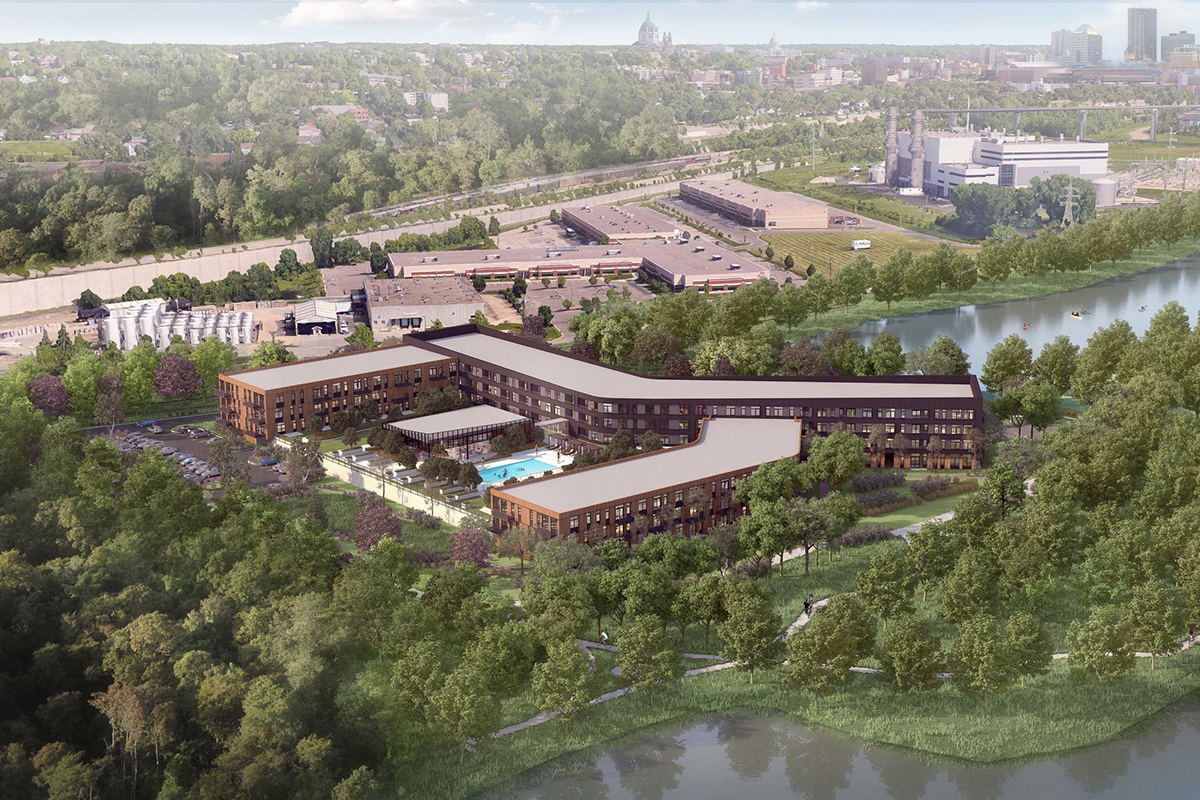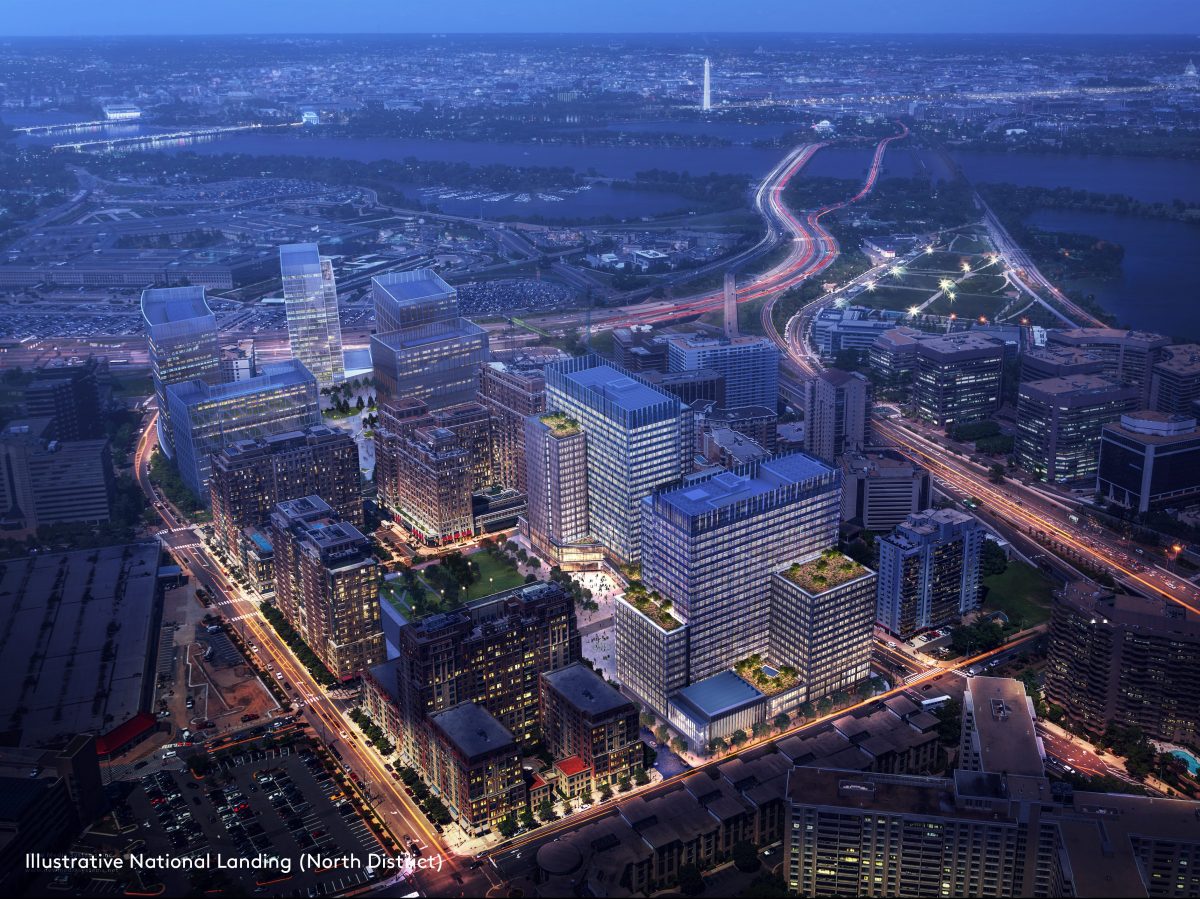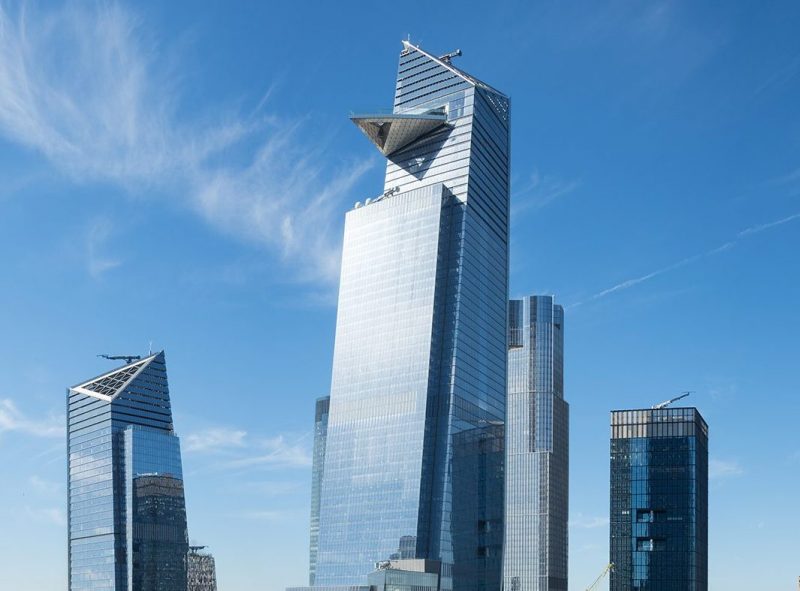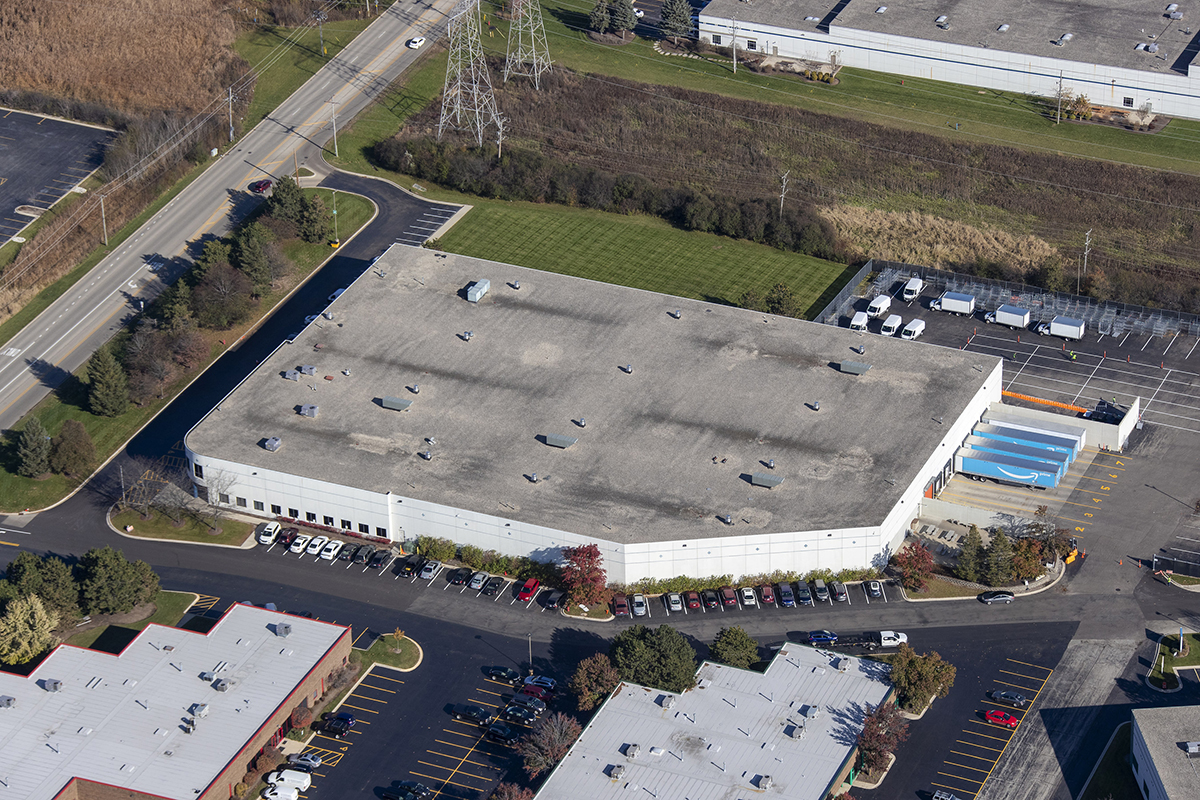The Most Pivotal CRE Stories of 2019
These were the deals, trends and moments that shaped and defined commercial real estate in 2019.
Commercial real estate saw many dramatic twists and turns in 2019, many driven by the burgeoning sharing economy and ecommerce sectors. The year started out with a lot of hand-wringing about when the recession would come, but it turned out to be another prosperous 12 months for the industry. Nevertheless, some warnings signs are again flashing as we enter 2020. Read on for our roundup of the top commercial property stories of 2019.

Rendering of Waterford Bay Apartments, which will be built by Stoneleigh Cos. in an Opportunity Zone in Saint Paul, Minn. Rendering courtesy of Stoneleigh Cos.
Opportunity Zones gear up for their moment of truth
Created in late 2017, the federal Opportunity Zone program has so far failed to live up to its hype. U.S. Treasury Secretary Steven Mnuchin predicted that the tax-advantaged census tracts would ultimately vacuum up more than $100 billion in private capital, but analysis of publicly available data suggests that actual fundraising is just a fraction of that.
But investor interest may heat up since the federal government released the final OZ rules less than two weeks ago. Incorporating industry feedback after the latest round of draft rules were unveiled in April, the new regulations remove lingering uncertainties and grant more flexibility to real estate investors, developers and fund managers. The newfound clarity could potentially open the door to more aggressive investment in the nation’s more than 8,700 low-income communities in 2020.
This year saw a number of big players get behind the program, including CIM Group, which launched a $5 billion Opportunity Zone fund in January, and Avanath Capital Management, which partnered with Opportunity Assets Group to set up an OZ fund aiming to raise $300 million for affordable and workforce housing in April. Starwood Capital Group revealed in May that it is developing a charter school project in New York City’s South Bronx neighborhood as part of a new $500 million OZ strategy.

Rendering of National Landing, JBG Smith’s 6.2 million-square-foot office campus in Arlington, Va., where Amazon has signed leases for more than 580,000 square feet. Image courtesy of JBG Smith
Amazon nixes New York, but grows nationwide
It would be remiss not to mention the ever-present tech behemoth that is Amazon in a yearly round-up article. The Jeff Bezos-helmed e-commerce giant, now the most valuable retailer in the U.S., has been on a real estate roller coaster over the past 12 months—opening new facilities, signing new leases and entering new markets across the U.S. and Canada.
First, the company stunned New York City on Valentine’s Day, announcing it was scrapping plans to develop 4 million square feet for a second headquarters in Long Island City, N.Y., following pushback from the community and local elected officials. Among other things, some local and state representatives took issue over a proposed $2.5 billion in tax credits and cash grants from the city and state. Though Amazon abandoned its New York plans, the company did move forward with previously planned developments in Crystal City, Va. and Nashville, Tenn.
After the HQ2 debacle in New York, the company spent the next several months expanding its significant footprint in cities across the country. In Chicago and Austin, Amazon added considerable square footage to its leases, opened new fulfillment centers in Quebec and Florida, and signed a massive 335,000-square-foot lease in Manhattan’s Hudson Yards district earlier this month.
Flexible office forges ahead, but crucible awaits
The We Cos. dominated flexible office news this year as the Manhattan-based parent of WeWork shelved its IPO plans and received a $9.5 billion bailout package from Japan’s SoftBank. The turmoil experienced by the world’s leading coworking brand has prompted a widespread rethink of the industry’s viability, but the market for nontraditional office space is still mushrooming. The Instant Group calculates that U.S. flexible office supply surged by 10 percent year-on-year in 2019, closing out the year with more than 6,000 flexible office locations. Based on demand indicators, the company forecasts that number could grow to upwards of 10,000 by 2023.
Leading the way are major operators such as Knotel, which boosted its presence in Manhattan this year with a series of new leases while seeing its valuation crack $1 billion in August. San Diego-based CommonGrounds Workplace, which raised $140 million this year, has also been growing aggressively, venturing into new markets such as Philadelphia, Minneapolis and Portland, Ore. In the meantime, Switzerland-based IWG (formerly Regus), has revealed plans to expand its global network of office spaces to 30,000—roughly tenfold its current number—by embracing a franchising model. Despite these large-scale moves, much of the action in the sector is driven by niche operators that manage one or two locations.
Investors bet on sheds in flurry of mega-deals
Industrial real estate experienced another banner year in 2019, with rents reaching new highs and absorption on track to surpass 200 million square feet for the sixth year in a row, according to a recent report by Cushman & Wakefield. Propelled by the growth of ecommerce, traditional retail and third-party logistics providers, leasing activity was robust and vacancy rates hovered at a historic low of 4.8 percent.
Investors expressed their craving for warehouse and distribution facilities by scoring a series of industrial mega-deals this year. Blackstone made the biggest splash in June, announcing it would nearly double its industrial footprint through the $18.7 billion purchase of a portfolio spanning 187 million square feet across the U.S. from Singapore-based Global Logistic Properties. The private equity giant followed up that deal by acquiring the light industrial division of Colony Capital for $5.9 billion in September.
Logistics giant Prologis, which reportedly vied with Blackstone for the GLP portfolio, separately notched its own industrial mega-deals. In October the company agreed to buy rival Liberty Property Trust, which operates more than 107 million square feet of logistics space, in a transaction valued at $12.6 billion. Norway’s sovereign wealth fund also got in on the action with Norges Bank Investment Management partnering with Prologis to snap up a 127-asset U.S. logistics portfolio for $2 billion in November.

30 Hudson Yards, where Allianz bought a stake in an office condo (center). Image courtesy of Rhododendrites via Wikimedia Commons
Foreign investment’s big shift
Ever since China sharply pulled back its investments in U.S. real estate, the foreign investment scene has been ripe with change. Trade wars, the threat of a looming economic slowdown and political uncertainty have caused investors to take more caution. Canada took China’s spot as the biggest investor in American commercial real estate while foreign buyers continued to branch out from traditional core office markets into retail, industrial and senior housing and widened their geographic scope.
Cross-border investment slipped to 10 percent of total capital plowed into U.S. commercial real estate in the 12 months through the third quarter of 2019, driven in large part by the ongoing retreat of Chinese investors, according to Real Capital Analytics. Dispositions topped acquisitions by $18 billion in the first three quarters of the year.
That said, investors from Canada, Germany, Singapore and elsewhere continued to play a significant role in the world’s largest and most liquid commercial property market. German insurance firm Allianz paid $384 million for a piece of 30 Hudson Yards, the second-tallest office skyscraper in New York City, in June. Singapore’s Mapletree Investments and Mapletree Industrial Trust chalked up two North American data center deals with Digital Realty totaling nearly $1.4 billion in September.









You must be logged in to post a comment.